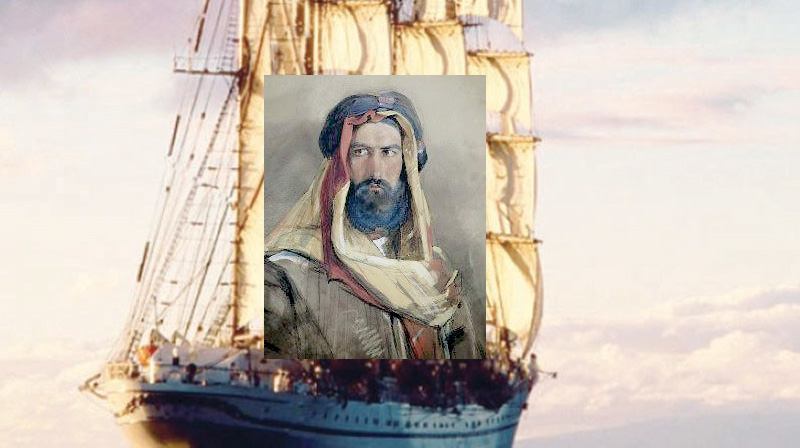

It might be a digital world but written words have a strong connection to a land’s history, especially when the author happens to be a historical figure.
The Indian Ocean, the wind direction, the moon and the stars are all the factors that would immediately think of the historical navigator – Ahmed bin Majid. The man behind the making of the compass and Kamal, the wood and rope instrument to understand the measurement in regard to the North Star. Not only was he a renowned navigator and an adventurer, but also an author with remarkable insight. The manuscript has been far away from the land but come October 2020 everyone will have a chance to see it in Oman.
Not only did he enjoy the voyages, but he wrote them down. The book written by Ahmed bin Majid al Saadi’s own handwriting has been preserved in St Petersburg since the beginning of the 19th century and has been registered as a national heritage of the Russian Federation.
Just a few days back, the National Museum of Oman, represented by Jamal bin Hassan al Moosawi, the Director-General of the Museum, signed an agreement with the Institute of Oriental Manuscripts of the Russian Academy of Sciences, represented by Professor Dr Irina Popova.
This means the people would now be able to see the handwritten with red and black ink on paper in this leather bound book with a size of 20 x 12.7 cm, which will be in Oman on loan in the month of October 2020.
The original manuscript of the Omani navigator entitled, Kitab Al Fawaid Fi Usul Ilm Al Bahr Wa Al Qawaid will be on display from October 2020 in the Maritime History Gallery in the National Museum, Oman.
“The manuscript compiled and written by the hand of the famed Omani 15th to 16th century navigator, Ahmed bin Majid al Saadi is of immense historical value to Oman. It will be displayed in the Maritime History Gallery for a period of four months,” said Jamal al Moosawi in a statement to the Observer.
The manuscript is divided into three parts: the first part is dedicated to the navigation line along the Eastern African Coast; the second part describes the marine route to India, Indonesia and South China and the third part of the book deals with details and tips with navigational instructions on handling the Red Sea.
These three parts gives an idea on the routes he must have sailed across quite often — the sea man who was often referred to as the ‘Lion of the Sea.’
This special manuscript was acquired in 1819 by the Asiatic Museum of the Russian Academy of Science in Saint Petersburg, which was later renamed as the Institute of Oriental Manuscripts in 2007. The Institute of Oriental Manuscripts contains about 115,593 classified and printed manuscripts in over 65 oriental languages, while the total number of the Institute holdings is more than one million.
So from 1819 the manuscript has been waiting to arrive in Oman and the step has been taken now in 2019. The public will be able to see it in October 2020.
Oman Observer is now on the WhatsApp channel. Click here



